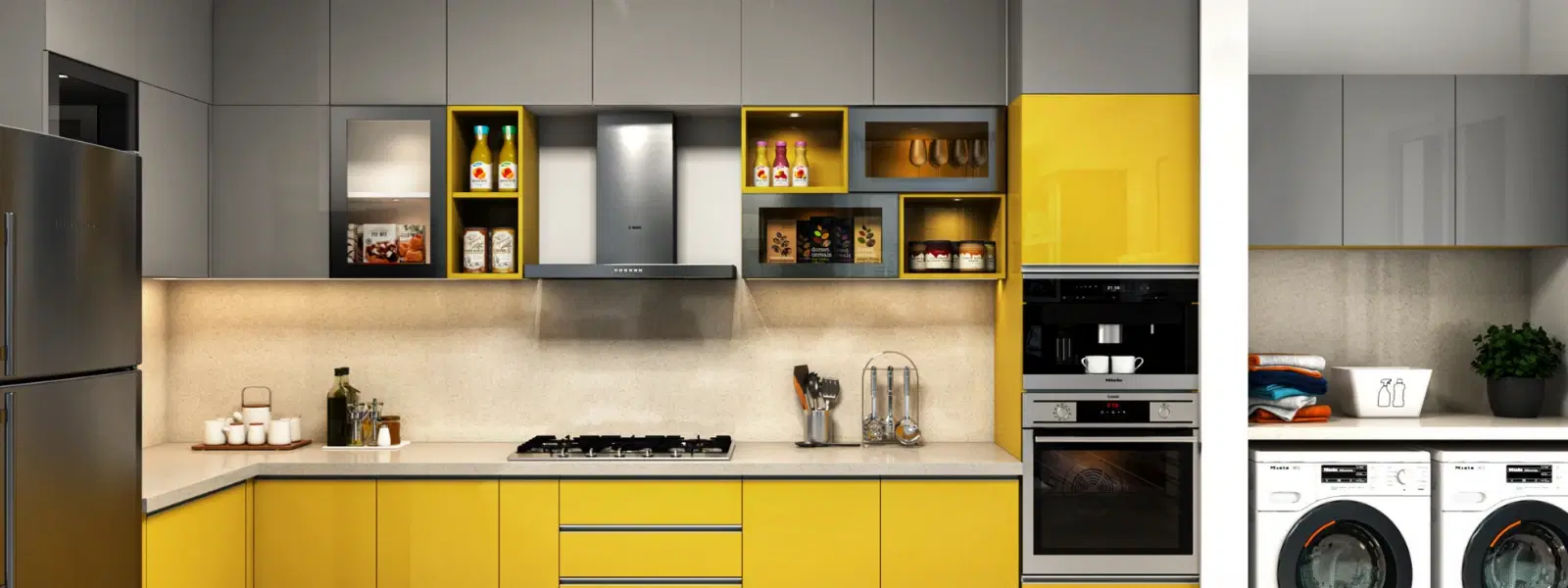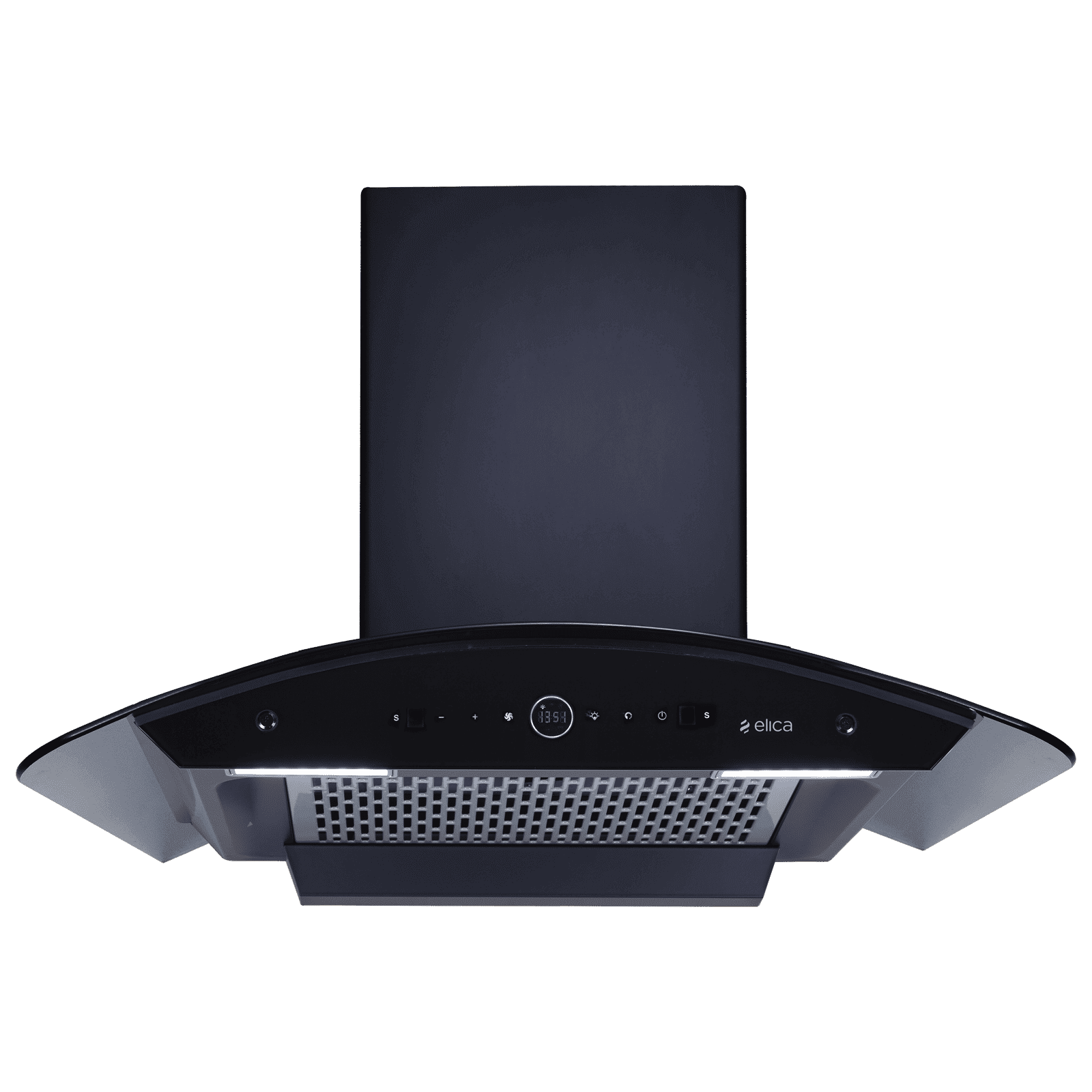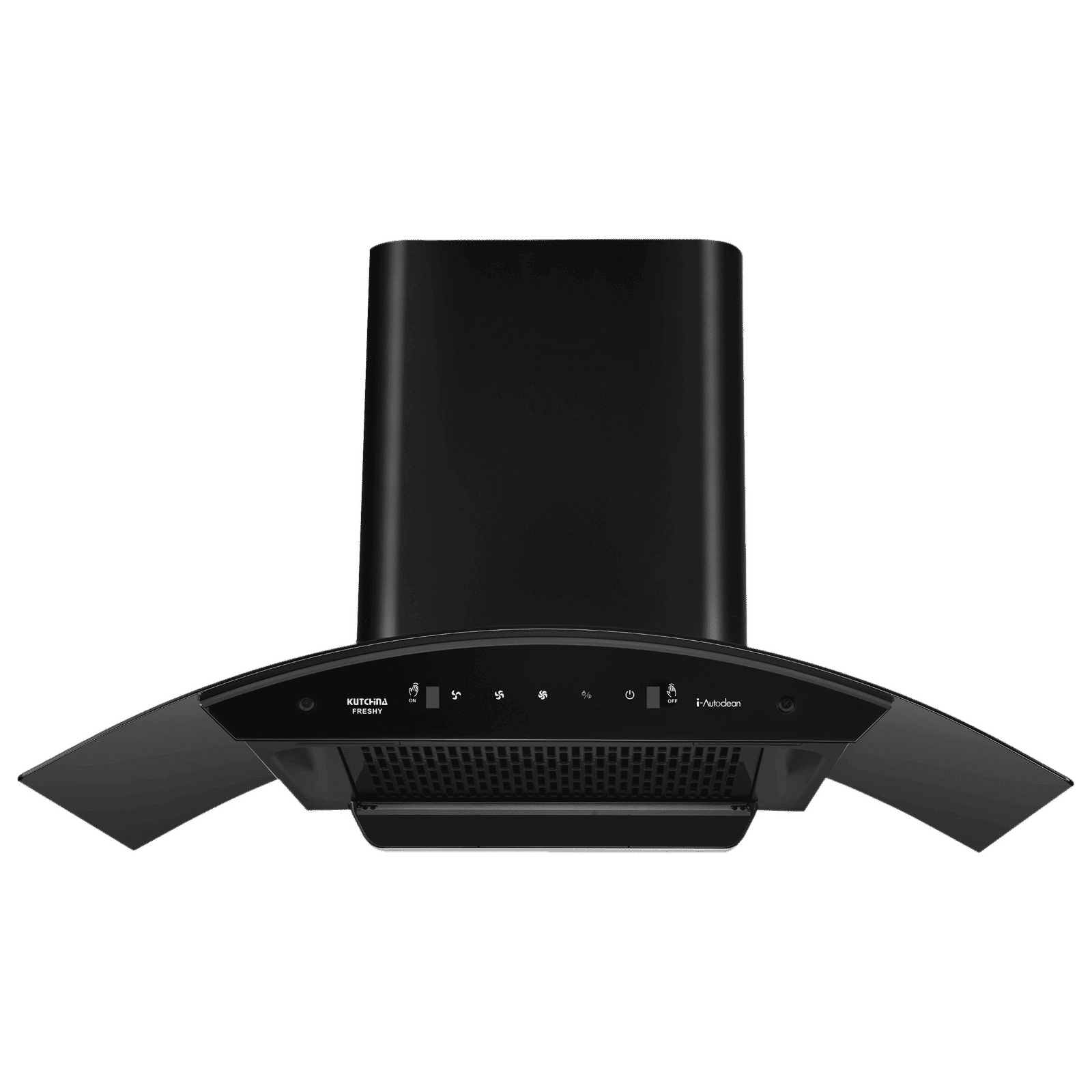
Home Appliances
•05 min read

Buy elica BFCG 600 HAC LTW MS NERO 60cm 1350m3/hr Ducted Auto Clean Wall Mounted Chimney with Touch Control Panel (Black) online at best prices from Croma. Check product details, reviews & more. Shop now!
Ever wondered why your Kitchen Chimney's performance sometimes feels off? It might all boil down to one critical factor—its wattage. Understanding Kitchen Chimney wattage is essential in achieving optimal energy efficiency and maintaining performance levels that suit your cooking needs. In this guide, we provide you with a comprehensive checklist designed to help you determine the ideal wattage for your kitchen chimney, ensuring the perfect balance between suction power and electricity usage.
Before you choose a chimney, it is important to know what kitchen chimney wattage means. Wattage, in this context, is a measure of power consumption and directly influences how well your chimney performs. A higher wattage means a more powerful motor that ensures stronger suction, yet it may also lead to higher energy consumption. Therefore, striking a balance between efficient cleaning and lower electricity usage is key.
Choosing the right wattage plays a significant role in improving your kitchen chimney energy efficiency. An optimal balance between chimney power consumption and performance can translate into steady suction power, lower electricity usage, and long-term savings on your energy bills. Understanding this balance is especially important for those who cook frequently or handle heavy frying and spice-laden recipes.
The dimensions of your kitchen greatly affect the required power for an effective chimney. Smaller kitchens typically require lower wattage models, whereas larger kitchens may benefit from a more powerful unit to cover the extended area efficiently. Determining your kitchen size, therefore, helps in pre-selecting models that are well-suited for your space.
Your style of cooking also plays a crucial role in deciding the ideal wattage for your kitchen chimney. If you enjoy frequent and heavy cooking—especially in kitchens that involve a lot of frying or strong aromatics—the need for a higher suction capacity becomes paramount. Essentially, the more rigorous the cooking style, the higher the wattage one might need to maintain cleanliness in the kitchen.
The motor is the heart of the chimney system. Its wattage is instrumental in determining the overall performance and efficiency of the unit. A model with a robust motor wattage is likely to offer better suction capacity but may also result in increased energy usage if not optimally balanced. Therefore, checking the motor wattage is a critical step in selecting an energy-saving kitchen chimney.
When shopping for an energy-efficient kitchen chimney, consider this easy-to-follow checklist to ensure you make an informed decision:

Buy elica PRO PLUS FL BLDC 75cm 1600m3/hr Ducted Auto Clean Wall Mounted Chimney with Motion Sensor Control (Black) online at best prices from Croma. Check product details, reviews & more. Shop now!
Start by matching your kitchen dimensions with your cooking habits. A more spacious kitchen or one that involves heavy frying may require a chimney with a higher wattage to ensure effective performance.
It is important to choose models that boast energy-saving features. Check for quality energy efficiency labels or ratings that indicate lower kitchen chimney electricity usage. These models help you manage chimney power consumption without compromising on suction power.
Understanding the relationship between suction power (typically measured in m³/hr) and wattage is essential. Many models provide a general guideline that links the ideal wattage to a corresponding suction power level. For example, a model with a motor wattage of around 250W may offer a suction capacity that is more than sufficient for most medium-sized kitchens.
Different models can offer varied power ratings even if their wattage appears similar. It is wise to compare these ratings with performance metrics such as noise levels and additional features like auto-clean technology or filterless designs. These factors, coupled with the kitchen chimney performance metrics, can help you determine the ideal wattage for a kitchen chimney that truly meets your needs.
Modern chimneys come equipped with useful features such as motion sensors, auto-clean technology, and filterless designs that enhance functionality while also potentially reducing energy consumption. Reviewing these features may further aid in your quest for a low power kitchen chimney that contributes to overall energy saving while ensuring effective operation.
Pro Tip for Energy Efficiency
Did you know? Choosing a kitchen chimney with a motor wattage of 250W and a suction capacity of 1200 m³/hr can offer the perfect balance between energy efficiency and performance for most medium-sized kitchens.
One of the most vital aspects of selecting a kitchen chimney is understanding how much power it consumes and how to calculate its usage. A simple way to do this is by using a basic formula that considers the wattage and daily hours of operation. For instance, a 250W chimney running for 2 hours daily would consume about 15 kWh per month. This direct relation between electric chimney power usage and consumption is vital for budgeting your monthly energy expenses and striving for a more sustainable kitchen setup.
Regular cleaning and timely maintenance play a critical role in limiting excessive power consumption. If a chimney is well-maintained, it runs more smoothly and requires less energy to operate at optimal performance levels. In addition, opting for energy-saving kitchen chimneys ensures that every minute of operation contributes not just to stellar performance, but also to measurable cost and energy benefits.
When shopping for your next kitchen chimney, it is useful to know some key metrics that outline performance range and efficiency:

Buy Kutchina FRESHY 90cm 1350m3/hr Ducted Wall Mounted Chimney with Filterless Technology (Black) online at best prices from Croma. Check product details, reviews & more. Shop now!
The core metrics include wattage, suction power, and noise levels. Generally, optimal wattage ranges can be illustrated as follows for different kitchen sizes: small kitchens typically require 120-200W, medium kitchens call for 200-300W, and larger spaces might need a robust system rated at 300-400W or more. These metrics form a simple yet effective guideline for comparing and selecting the ideal wattage for your kitchen chimney.
Having a clear classification by wattage ranges helps in setting realistic expectations on performance. Understanding these ranges allows you to align your kitchen size with the appropriate power rating, ensuring that there are no compromises in either suction capacity or energy efficiency.
While performance metrics are important, real-life usage and additional features should always influence your final decision. Modern chimneys now offer various conveniences such as quieter operations and smart sensors, alongside balanced power ratings that meet diverse needs.
Kitchen hoods typically use between 120W and 400W, depending on the size and suction capacity required.
Yes, a suction capacity of 1200 m³/hr is ideal for medium to large kitchens, especially for those who engage in heavy cooking.
Most kitchen exhausts consume around 200W to 300W per hour, though this varies by model and operating frequency.
Key factors include the motor wattage, suction power, frequency of use, and additional features that may alter how efficiently a chimney operates.
Understanding these comprehensive details can help you make an informed decision when choosing a unit that meets everything from basic cleaning to energy-saving goals. The guidance above is designed to steer tech enthusiasts, families, and young professionals in the right direction by balancing functionality, efficiency, and affordability—all while benefiting from additional rewards when they shop wisely.
In summary, understanding kitchen chimney wattage is crucial for maintaining a balance between suction performance and energy efficiency. By carefully assessing your kitchen size, cooking habits, and the available performance metrics, you can select an appliance that not only keeps your kitchen fresh but also helps manage energy consumption effectively. This checklist offers key insights to make that decision smoother and more informed. With the seamless services of platforms offering expert guidance and rewards like NeuCoins, you can confidently invest in a kitchen setup that ensures both quality and smart savings.